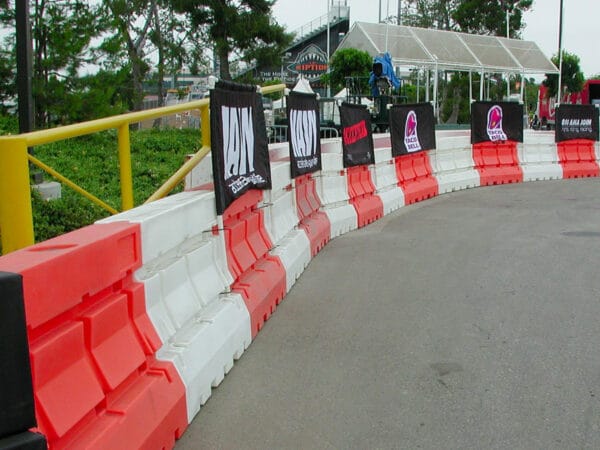Water Filled Barriers at Race Circuits
Posted by Brad Jones on
Water filled barriers are becoming increasingly popular at race circuits around the world. These barriers are designed to absorb the energy of a crash and reduce the risk of injury to drivers.
Water filled barriers are made up of a series of interconnected water-filled tubes that are placed around the circuit. When a car crashes into the barrier, the water in the tubes absorbs the energy of the impact and helps to slow the car down. This reduces the risk of injury to the driver, as well as reducing the risk of damage to the car.

One of the key advantages of water filled barriers is that they are much more effective than traditional barriers made of concrete or steel. Concrete and steel barriers can cause significant damage to cars and can also be quite dangerous for drivers. Water filled barriers, on the other hand, are much more forgiving and can help to reduce the severity of a crash.
Another advantage of water filled barriers is that they are relatively easy to install and maintain. Unlike concrete or steel barriers, which can be quite heavy and difficult to move, water filled barriers are relatively lightweight and can be installed and removed quickly and easily. This makes them ideal for use at race circuits, where the layout of the circuit may change frequently.

Overall, water filled barriers are a great choice for race circuits and other high-speed venues. They are safer, more effective, and easier to install and maintain than traditional barriers, and they can help to reduce the risk of injury to drivers. If you're looking for a barrier solution that can help to keep drivers safe and reduce the risk of damage to cars, water filled barriers are definitely worth considering.
